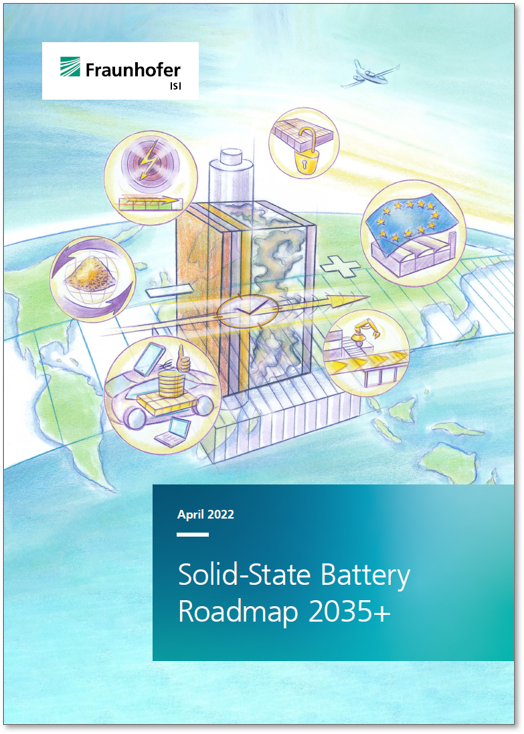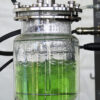
Solid-State Battery Roadmap 2035+
Summary:
Introduction: The automotive sector has been pivotal in the technological advancement of lithium-ion batteries (LIB). However, the potential for further optimization of LIBs is nearing its limits. As a result, there's a shift towards developing solid-state batteries (SSBs), which use solid electrolytes rather than liquid. This roadmap provides insights into the developments of SSBs over the next decade in comparison to LIBs.
Key Results:
- Materials and Components:
- For SSBs, lithium metal and silicon are leading anode active materials. While lithium has high energy densities, silicon anodes are seen as the next-generation choice for LIBs.
- The most promising cathode active materials are Ni-rich layered oxides, lithium iron phosphate, and potentially sulfur in the distant future.
- The core component, the solid electrolyte, can be grouped into three categories: oxide, sulfide, and polymer electrolytes. Each has its advantages and challenges.
- Production and Cell Concepts:
- Four primary cell concepts are highlighted:
- Lithium metal anodes with oxide solid electrolyte (SE).
- Lithium metal anodes with sulfide SE.
- Silicon anode with sulfide SE.
- Lithium anode with polymer SE.
- Pilot production timelines vary, but SSBs with lithium metal anodes and oxide SE might commence by 2025, and those with sulfide SE by 2028.
- Four primary cell concepts are highlighted:
- Key Performance Indicators (KPI) of SSB:
- Energy density is a crucial KPI, especially for mobile applications. Some SSBs can surpass current LIBs in this aspect.
- Safety is another advantage as SSBs lack flammable liquids, though they have their set of challenges.
- The longevity of SSBs might match or exceed LIBs, but cost and fast-charging capability remain challenges.
- Applications:
- Currently, polymer SSBs are used in buses, but their high operating temperature is limiting.
- The automotive sector is the main driver behind SSB development. However, inorganic SSBs might first appear in consumer electronics due to less stringent requirements.
- By 2035, SSBs might expand to passenger aviation.
- Market Aspects:
- SSB production capacity is currently below 2 GWh, mostly in polymer SSBs. This could grow to 15–40 GWh by 2030 and 55–120 GWh by 2035.
- Though the potential for SSBs is evident, liquid electrolyte LIBs will likely dominate the market for the foreseeable future.
- In terms of geographic R&D, Asia (Japan, South Korea, China) and the USA lead. The EU, while strong in research, lags in pilot production and other areas.
- Key Challenges:
- Technical issues vary across different SSB technologies, including scale-up, component compatibility, and production challenges.
- As SSBs compete with LIBs, they need to continually benchmark and surpass in KPIs.
- The EU currently trails behind Asian and US players in SSB development but has an opportunity to become a major player in the technology.
In essence, while SSBs present promising advancements over traditional LIBs, there are technical and market-based challenges to address. The roadmap suggests that with proper focus and investment, SSBs could revolutionize the battery market, especially in the automotive sector.
The report can be downloaded directly from the publisher's website.






Solid-State Battery Roadmap 2035+ 0 reviews
Login to Write Your ReviewThere are no reviews yet.